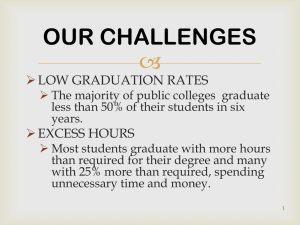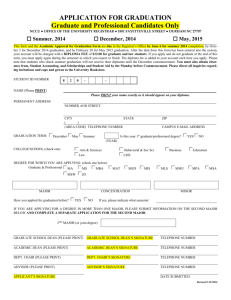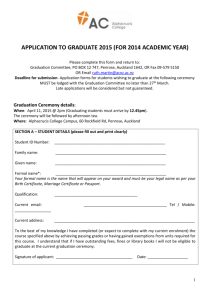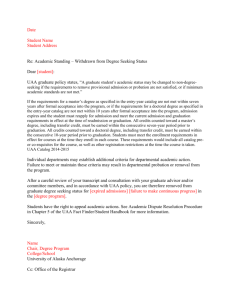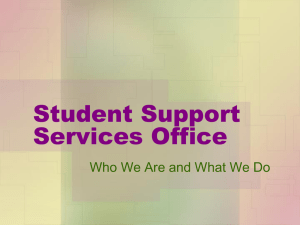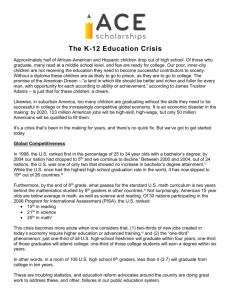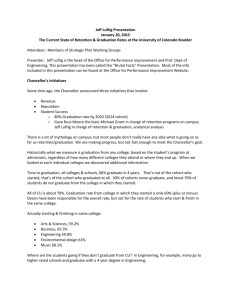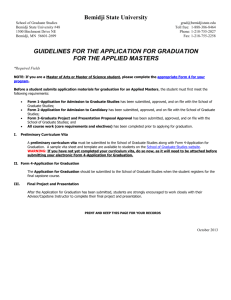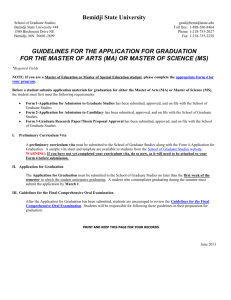College & Career resources
advertisement
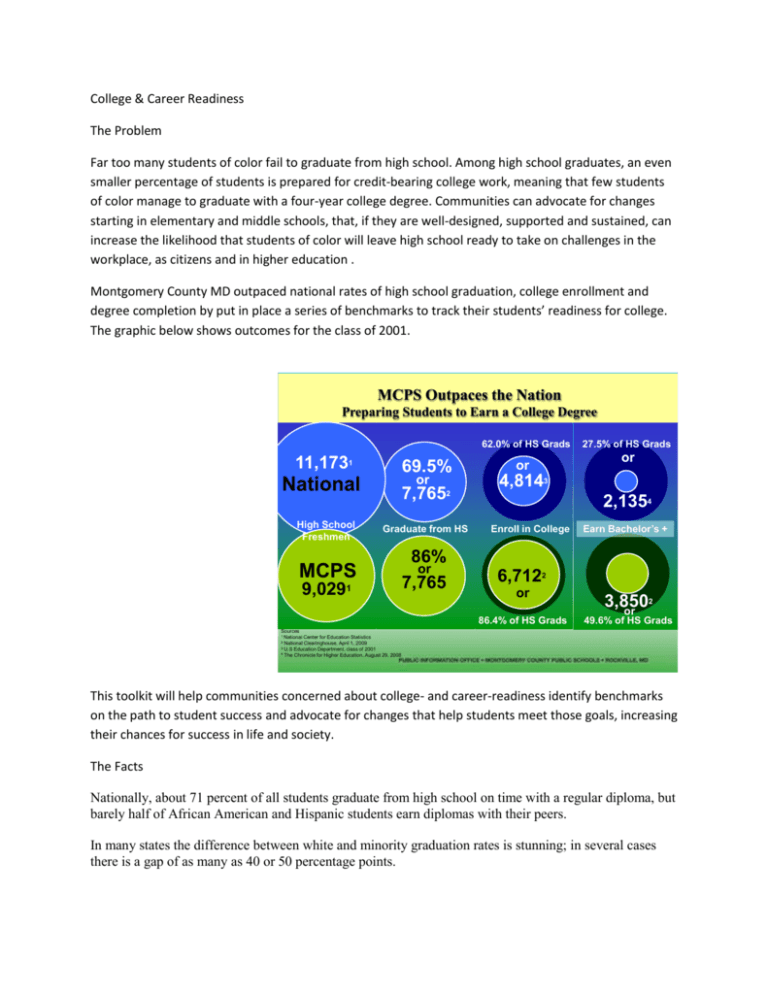
College & Career Readiness The Problem Far too many students of color fail to graduate from high school. Among high school graduates, an even smaller percentage of students is prepared for credit-bearing college work, meaning that few students of color manage to graduate with a four-year college degree. Communities can advocate for changes starting in elementary and middle schools, that, if they are well-designed, supported and sustained, can increase the likelihood that students of color will leave high school ready to take on challenges in the workplace, as citizens and in higher education . Montgomery County MD outpaced national rates of high school graduation, college enrollment and degree completion by put in place a series of benchmarks to track their students’ readiness for college. The graphic below shows outcomes for the class of 2001. MCPS Outpaces the Nation Preparing Students to Earn a College Degree 62.0% of HS Grads 11,173 69.5% National 7,7652 1 or High School Freshmen Graduate from HS MCPS 86% or 7,765 9,0291 or 27.5% of HS Grads or 4,8143 2,1354 Enroll in College Earn Bachelor’s + 6,7122 or 86.4% of HS Grads 2 3,850 or 49.6% of HS Grads Sources 1 National Center for Education Statistics 2 National Clearinghouse, April 1, 2009 3 U.S Education Department, class of 2001 4 The Chronicle for Higher Education, August 29, 2008 This toolkit will help communities concerned about college- and career-readiness identify benchmarks on the path to student success and advocate for changes that help students meet those goals, increasing their chances for success in life and society. The Facts Nationally, about 71 percent of all students graduate from high school on time with a regular diploma, but barely half of African American and Hispanic students earn diplomas with their peers. In many states the difference between white and minority graduation rates is stunning; in several cases there is a gap of as many as 40 or 50 percentage points. A sixteen- to twenty-four-year-old coming from the highest 25% of family income earners is about seven times as likely to have completed high school as a sixteen- to twenty-four-year-old coming from the bottom 25% in family income. Over the course of his or her lifetime, a high school dropout earns, on average, about $260,000 less than a high school graduate.13 If U.S. high schools and colleges raise the graduation rates of Hispanic, African American, and Native American students to the levels of white students by 2020, the potential increase in personal income would add more than $310 billion to the U.S. economy. Six years after enrolling, college graduation rate for black students stands at an appallingly low rate of 43 percent. This figure is 20 percentage points below the 63 percentage rate for white students. Take Action to prevent dropping out and prepare students for success What you can do: 1. Form a committee (see the handbook for guidelines about forming a turnaround schools council) 2. Target your efforts to a turnaround school or dropout factory (see the appendix for a state-by state list) 3. Decide which of the following actions is necessary to keep students on track for college-andcareer-ready graduation. Data mining initiative/Equity Audit – a strategy that leverages the data systems states are being required to build, to flag early warning signs for students at risk of dropping out or failing academically, identify disparities along racial and class lines in achievement, discipline or access to rich curricula, and to track the distribution of resources such as counselors and strong school leaders. Whole school reform – a strategy that seeks to reorganize a school to improve teaching and better meet student (and often community) needs. There are numerous models of success at building capacity for effective instruction that tend to involve parental outreach, efforts to improve teaching and leadership, additional resources and support personnel and innovative ways of accessing a challenging curriculum. Extended learning time proposal – a strategy that seeks to use time differently to increase student learning, allowing for lengthier school days or years during which students can access enrichment opportunities, tutoring, service learning and project-based instruction or teachers can plan together, evaluate student work and data to adjust instruction and work to improve practice. School Climate Survey – a strategy that combines surveys, interviews and focus groups of students, parents and school personnel with an examination of data such as teacher attrition, absences and turnover, student absences and discipline referrals, class size and course offerings to design a tailored set of interventions for that school. Note: Youth and college students have a particular interest in this element of the education plan. They can act as advisors, helping to devise early warning systems and identify the responses needed to place students back on track. They can also serve as school climate investigators who are more likely to be trusted since they are closer in age to the students commenting on climate.
